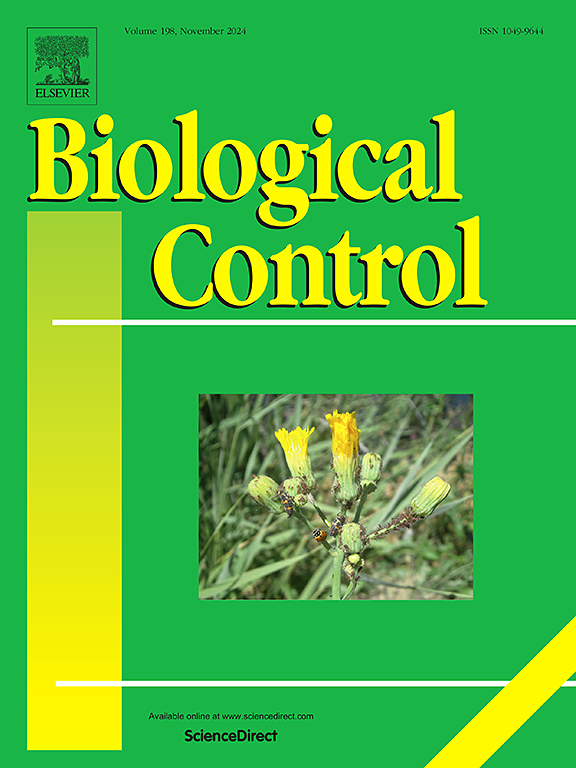Latin America has the largest area under augmentative biological control worldwide, mainly with applications in open field crops
IF 3.4
2区 农林科学
Q2 BIOTECHNOLOGY & APPLIED MICROBIOLOGY
引用次数: 0
Abstract
During the past 30 years, augmentative biological control (ABC) has received increasing interest and is now applied in a large diversity of crops on many hectares in Latin America and the Caribbean. Around the year 2000 4.35 million hectares were estimated to be treated with ABC, in 2018 this had grown to 31.4 million hectares, and the estimate for 2024 was about 62 million hectares. Many factors explain this dramatic increase, the most important being (a) the development of microbial agents that are relatively cheap compared to macrobial agents, easy to produce, store and apply, and reliable, (b) the fine tuning and drastic shortening of registration procedures, (c) a change in attitude towards use of alternatives for chemical pesticides among young farmers. However, there are also factors frustrating implementation of ABC of which the most important are the lobbying activities of the synthetic pesticide industry and lack of application of the true cost principle for these pesticides which makes them unrealistically cheap. Major differences with other world regions are that in Latin America ABC is almost exclusively applied in the open field, is often not based on development of resilient systems and changed in the 21st century from mainly using macrobial control agents to increased applications with microbial control agents.

拉丁美洲是世界上采用增强型生物防治的面积最大的地区,主要应用于露天作物
在过去30年中,增效生物防治(ABC)受到了越来越多的关注,目前在拉丁美洲和加勒比许多公顷的大量作物上得到了应用。2000年前后,估计有435万公顷的土地被ABC处理,2018年这一数字增长到3140万公顷,2024年的估计约为6200万公顷。许多因素解释了这种急剧增长,最重要的是(a)微生物制剂的发展,与微生物制剂相比,微生物制剂相对便宜,易于生产、储存和使用,而且可靠;(b)登记程序的微调和大幅缩短;(c)年轻农民对使用化学农药替代品的态度发生了变化。然而,也有一些因素阻碍了ABC的实施,其中最重要的是合成农药行业的游说活动,以及这些农药缺乏实际成本原则的应用,这使得它们便宜得不切实际。与世界其他地区的主要区别在于,拉丁美洲的ABC几乎完全应用于开放领域,通常不以弹性系统的发展为基础,并且在21世纪从主要使用微生物防治剂转变为增加微生物防治剂的应用。
本文章由计算机程序翻译,如有差异,请以英文原文为准。
求助全文
约1分钟内获得全文
求助全文
来源期刊

Biological Control
生物-昆虫学
CiteScore
7.40
自引率
7.10%
发文量
220
审稿时长
63 days
期刊介绍:
Biological control is an environmentally sound and effective means of reducing or mitigating pests and pest effects through the use of natural enemies. The aim of Biological Control is to promote this science and technology through publication of original research articles and reviews of research and theory. The journal devotes a section to reports on biotechnologies dealing with the elucidation and use of genes or gene products for the enhancement of biological control agents.
The journal encompasses biological control of viral, microbial, nematode, insect, mite, weed, and vertebrate pests in agriculture, aquatic, forest, natural resource, stored product, and urban environments. Biological control of arthropod pests of human and domestic animals is also included. Ecological, molecular, and biotechnological approaches to the understanding of biological control are welcome.
 求助内容:
求助内容: 应助结果提醒方式:
应助结果提醒方式:


